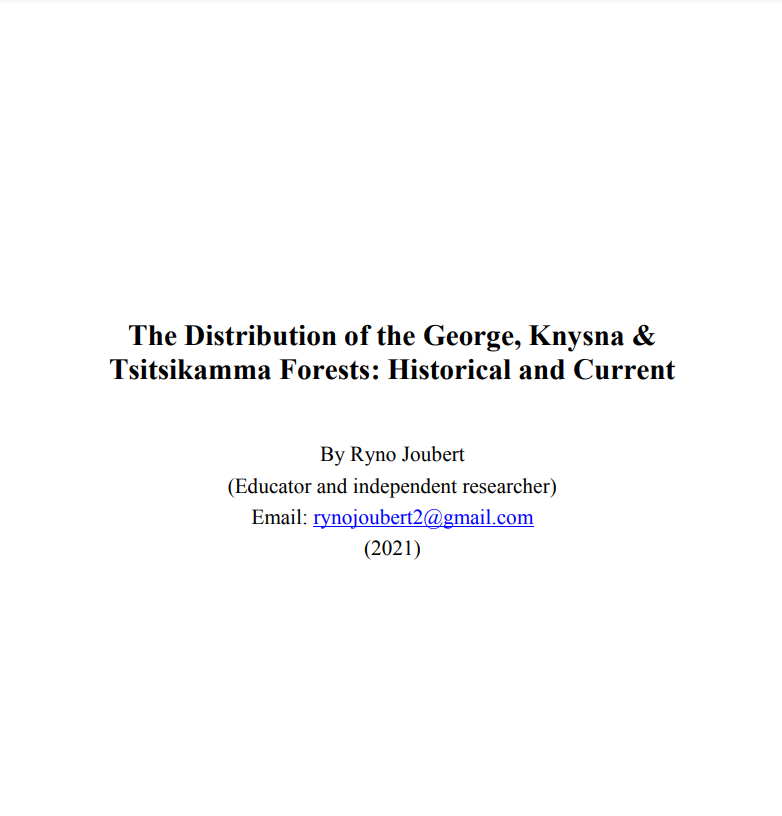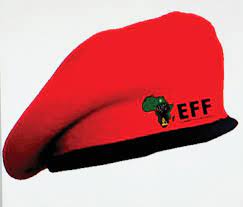The Distribution of the George, Knysna & Tsitsikamma Forests: Historical and Current by Ryno Joubert


The flag of the Sahrawi Arab Democratic Republic, which was adopted in February 1976, is composed of three horizontal stripes in black, white and green colours. On the pole side of the flag, a red wedge is located and the central white stripe carries a symbol of a five-pointed star and a crescent. The colours used have traditional pan-Arab character which expresses solidarity among Arab nations. In addition, the red colour indicates revolutionary and progressive character of the state. The crescent and the star are traditional symbols of Islam. Sahrawi Arab Democratic Republic is only partially recognized state since Morocco is claiming part of the territory. Formerly (1958–76) Spanish Sahara, territory occupying an extensive desert Atlantic-coastal area 252,120 square km, of northwest Africa. Western Sahara is virtually all desert and is very sparsely inhabited. It is composed of the geographic regions of; Río de Oro (“River of Gold”). Occupying the southern two-thirds of the region (between Cape Blanco and Cape Bojador), and Saguia El-Hamra, occupying the northern third. It is bounded by the Atlantic Ocean on the west and northwest, by Morocco on the north, by Algeria for a few miles in the northeast, and by Mauritania on the east and south.
Population in 2007, was approximately 489,000. Western Sahara is a sparsely-populated area of mostly desert situated on the northwest coast of Africa. A former Spanish colony, it was annexed by Morocco in 1975. Since then it has been the subject of a long-running territorial dispute between Morocco and its indigenous Saharawi people, led by the Polisario Front. Little is known of the prehistory of Western Sahara, although Neolithic (New Stone Age) rock engravings in; Saguia El-Hamra and in isolated locations in the south suggest that it was occupied by a succession of hunting and pastoral groups, with some agriculturists in favoured locales, prior to a gradual process of desertification that began about 2500 BCE. By the 4th Century BCE there was trade between Western Sahara and Europe across the Mediterranean; the Phoenicians sailed along the west coast of Africa in this period.
The Romans also had some contact with the Saharan peoples. By medieval times this part of the Sahara was occupied by Berber peoples who were later dominated by Arabic-speaking Muslim Bedouins from about 1000 CE. In 1346, the Portuguese discovered a bay that they mistakenly identified with a more southerly Río de Oro, probably the Sénégal River. The coastal region was little explored by Europeans until Scottish and Spanish merchants arrived in the mid-19th Century, although in 1476 a short-lived trading post, Santa Cruz de Mar Pequeña, was established by Diego García de Herrera, a Spaniard. In 1884 Emilio Bonelli, of the Spanish Society of Africanists and Colonists, went to Río de Oro bay and signed treaties with the coastal peoples. Subsequently, the Spanish government claimed a protectorate over the coastal zone. Further Spanish penetration was hindered by French claims to Mauritania and by partisans of the Sheikh, who between 1898 and 1902 constructed the town of Semara at an inland oasis. Cape Juby was occupied for Spain by Col. Francisco Bens in 1916, Güera was occupied in 1920. It is the southernmost town of Western Sahara. Güera is situated south of the Moroccan Wall, and is technically abandoned. and Semara and the rest of the interior were occupied in 1934. In 1957 the territory was claimed by Morocco, which itself had just reached independence the previous year. Spanish troops succeeded in repelling Moroccan military incursions into the territory, and in 1958 Spain formally united Río de Oro and Saguia El-Hamra into a Spanish province known as Spanish Sahara. However, the situation was further complicated by newly independent Mauritania’s claims to the province in 1960, and in 1963 huge phosphate deposits were discovered at a town, 'Bu Craa', in the northern portion of the Spanish Sahara, which made the province a potentially economically valuable prize for any country that could firmly establish possession of it. Mining of the deposits at Bu Craa began in 1972. Faced with consistent pressure from Morocco and Mauritania and itself undergoing a period of domestic uncertainty, Spain agreed to the partition of Western Sahara between the two countries despite a World Court ruling that Morocco’s and Mauritania’s legal claims to the Spanish Sahara were tenuous and did not negate the right to self-determination by the Sahrawis.
Morocco gained the northern two-thirds of the area and, consequently, control over the phosphates; Mauritania gained the southern third. Sporadic fighting developed between the Polisario Front, which was supported by and based in Algeria, and the Moroccan forces. In 1976 the Polisario Front declared a government-in-exile of what it called the Saharan Arab Democratic Republic. This government recognized was recognized by; some 70 countries. It continued to raid Mauritanian and Moroccan outposts in Western Sahara.
A United Nations, peace proposal in 1988 specified a referendum for the indigenous Sahrawis to decide whether they wanted an independent Western Sahara under Polisario Front leadership or whether the territory would officially become part of Morocco. This peace proposal was accepted by both Morocco and the Polisario Front, and the two sides agreed to a cease-fire in 1991. Meanwhile, Morocco continued to expand its physical infrastructure in Western Sahara despite widespread protests against its presence in the areas under its control. In the latter half of 2020, the Polisario Front, seeking to force change in the status quo, began obstructing a key trade route between Morocco and Mauritania. Morocco launched a military operation in November to break the blockade, prompting the Polisario Front to announce that it would no longer observe the 1991 cease-fire agreement. In December the United States became the first country to formally recognize Moroccan sovereignty over Western Sahara, in exchange for Morocco’s normalization of ties with Israel. Lives of women all over the World, depend on strong technological integration: attending a course, calling loved ones, making a bank transaction, or booking a medical appointment.
Everything currently goes through a digital process. However in the World, 37% of women do not use the internet. 259 million fewer women have access to the Internet than men, even though they account for nearly half the World's population. If women are unable to access the Internet and do not feel safe online, they are unable to develop the necessary digital skills to engage in digital spaces, which diminishes their opportunities to pursue careers in science, technology, engineering, and mathematics (STEM) related fields By 2050, 75% of jobs will be related to STEM areas. Yet today, women hold just 22% of positions in artificial intelligence, to name just one. Bringing women into technology results in more creative solutions and has greater potential for innovations that meet women’s needs and promote gender equality. Their lack of inclusion, by contrast, comes with massive costs.
https://www.theguardian.com/world/2013/jul/16/women-western-sahara-independence-morroco
https://www.britannica.com/topic/Polisario-Front https://flagpedia.net/western-saharahttps://earthobservatory.nasa.gov/images/92794/bou-craa-phosphate-mine-western-sahara?src=eoa-iotdhttps://www.bloomberg.com/news/articles/2021-03-17/why-the-fight-over-western-sahara-is-heating-up-again-quicktakehttps://ecfr.eu/publication/free-to-choose-a-new-plan-for-peace-in-western-sahara/https://www.bbc.com/news/topics/cz4pr2gdg3yt/western-sahara
https://www.yahoo.com/now/makes-archaeology-useful-well-exciting-140919160.html

REPUBLIC OF SOUTH AFRICA

Webinar Programme: Debating Socialist Lineages.
Convenors: Shahid Vawda and Lungisile Ntsebeza
The Making of the Trotskyist Tradition in South Africa: A Reading of 'The Spark', 1935-1937 by Crain Soudien